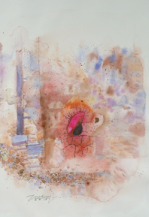
Head of the Bank of China, Manila Branch, Deng Jun (first right), China Daily Asia Pacific Publisher and Editor-in-Chief Zhou Li (first left) and artists from China and the Philippines pose for a group photo in front of a collaborative painting in Manila on Sept 28.[PHOTO BY MIRIAM ZHANG/CHINA DAILY]
As part of a bilateral cultural collaboration, artists from China and the Philippines come together to raise awareness about the importance of environmental protection in Asia. Li Bingcun and Willa Wu report.
A bilateral exchange program between Chinese and Filipino artists has added a colorful touch to the people-to-people connectivity of the two countries, as it has aroused a spirit of affinity and sparked inspiration drawn from distinctions, participants say.
The program, entitled In Harmony With Nature, was a two-month dialogue that brought together 10 artists from China and the Philippines. In two separate trips in September and October, they were invited to paint and showcase the beauty of nature in both countries, with the aim of raising awareness about environmental protection.
All of their paintings created during the trips, together with other representative works of the artists, have been exhibited in Manila and Shenzhen for nearly a month since. The two exhibitions involved more than 100 artworks.
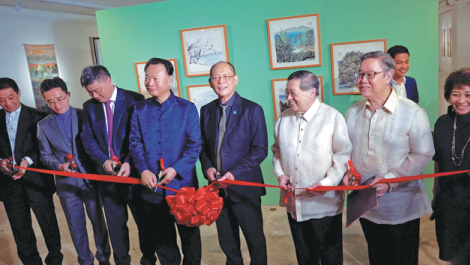
The then-Chinese Ambassador to the Philippines Zhao Jianhua (fourth from left), Governor of the Central Bank of the Philippines, Benjamin E. Diokno (fifth from left), Carlos Dominguez, secretary of finance of the Philippines (third from right) and other prominent guests kick off the inaugural ceremony of the In Harmony With Nature exhibition in the Philippines on Sept 28.[PHOTO BY MIRIAM ZHANG/CHINA DAILY]
At the exhibition's inaugural ceremony in Manila, Zhao Jianhua, the then-Chinese ambassador to the Philippines, described the program as a "pioneer" in art and cultural exchange between the two countries.
"It goes beyond the exchanges between individuals. It's also about the interaction of two different cultures and two different civilizations," said Zhao.
The bilateral exchange program was co-organized by the Bank of China, China Daily, the Chinese Culture and Art Association and the Metropolitan Museum of Manila.
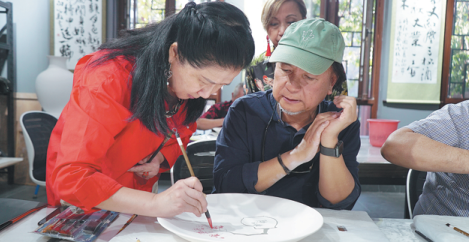
Chinese artist Kuku Chai Bu-kuk demonstrates porcelain painting skills to Filipino artist Rico Lascano in Liling, Hunan province, on Oct 21.[PHOTO BY MIRIAM ZHANG/CHINA DAILY]
Concern for nature
At the Shenzhen exhibition, Zhou Li, publisher and editor-in-chief of China Daily Asia Pacific, said the exchange program, which aims to enhance environmental awareness, has fostered Chinese-Philippine collaboration in environmental protection.
Through the program, the artists expressed their common wish to foster a harmonious relationship between nature and mankind, Zhou said.
Another organizer, Deng Jun, who is the country head of the Bank of China, Manila Branch, said that such exchange programs could help countries with different cultures to establish closer ties.
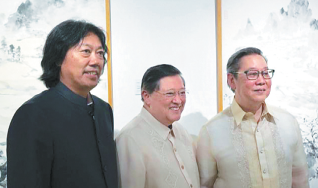
Renowned Chinese painter Ding Jie (left) poses in front of his works with Filipino Finance Secretary Carlos Dominguez III (center) and Metropolitan Museum of Manila Chairman Joselito Campos in Manila, the Philippines, on Sept 28.[Photo provided to China Daily]
Growing up under varied cultures, Chinese and Filipinos share a lot in common, like commitment to their families and a desire to contribute to their country, Deng said, adding that these similarities have laid a solid foundation for people-to-people bonds.
Chinese Culture and Art Association Chairman Zhou Yanzhao said the exchange activity has laid the groundwork for deeper Chinese-Philippine civilization communication and closer ties among economies under the framework of the Belt and Road Initiative.
Florentina Colayco, president of the Metropolitan Museum of Manila, called for more such initiatives in the future, saying that the exchange program has fostered collaborative spirit and mutual understanding among Chinese and Filipino artists.
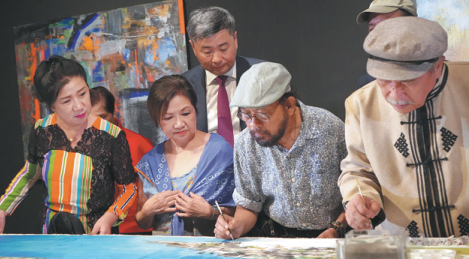
The exhibition is the result of collaboration between Chinese and Filipino artists.[PHOTO BY MIRIAM ZHANG/CHINA DAILY]
Mutual understanding
The exchange program comprised two segments. From Sept 23 to 26, five Chinese artists, along with their five Filipino peers, went on an outdoor field trip to various island retreats in the central Philippine province of Palawan.
Kuku Chai Bu-kuk-one of the Chinese artists who joined the program-said she was impressed by the island country's idyllic scenery, as well as the passion and hospitality of their Filipino friends.
"After spending several days drawing together, I now have a better understanding of their ways of presenting arts and their thinking toward life. Although we speak different languages, I think we've become closer at heart after the trip," she said.
In return, the five Filipino artists were treated to an art tour of Liling, Hunan province, from Oct 21 to 23.During the short stay in Liling for sketching and painting, they drew inspirations from the city's tranquil vibe, time-honored history, and art-friendly atmosphere.

Chinese and Filipino artists show off a joint painting they created during the inaugural ceremony of the In Harmony With Nature exhibition in Shenzhen, Guangdong province, on Oct 26. [PHOTO BY XIE SHUDAN/CHINA DAILY]
Filipino artist Manuel Baldemor said he was amazed by the art atmosphere in such a small city. He observed that not just artists, but ordinary people as well also share an interest in and appreciation of art. "Such an atmosphere is very conducive to art development," he said.
The artist was also surprised by the local authorities' support for art development. To better facilitate this, the Liling municipal government has designated several buildings in the heart of the city for artists to live in, work and exhibit their works.
Such an emphasis on art is rare in small cities. In the Philippines, most art resources, such as museums and galleries, are centered in Manila. There is a lack of the right conditions to develop art in small towns, especially on remote islands, Baldemor said.
Inspired by the experience in Liling, he is eager for opportunities to have a deeper understanding of the city-which he described as "a heaven for artists".If possible, he would like to apply for "art residency" in the city to enable him to stay longer.
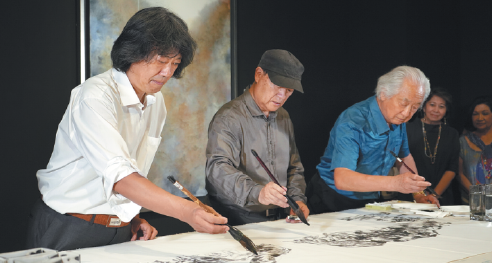
From left: Chinese artists Ding Jie, Hao Ping and Cai Zhixin draw a painting during the exhibition's inaugural reception at the Metropolitan Museum of Manila, the Philippines, on Sept 28.[PHOTO BY MIRIAM ZHANG/CHINA DAILY]
Collective improvement
The exchange program was also acclaimed by the participants as a tour of cooperative learning and collective improvement.
Besides the experiences of collective sketching, the 10 artists also jointly created two landscape paintings during the program. One is based on their impressions of the blue seas of the Philippines, and the other is inspired by the green fields of Liling.
Filipino artist Jonahmar Salvosa said he has learned a lot from the distinctive styles of art of the two countries. Previously, all his knowledge of Chinese paintings had been largely theoretical. The trip gave him the opportunity to learn directly from the Chinese master painters, observing their techniques and collaborating with them in creating artworks.
Salvosa said he has discovered many "secrets" of brush painting from his Chinese friends during the time they spent together. He held that the essence of Chinese painting skills, which require a fine control of lines and refined execution of colors, are fundamental to all drawing styles. He believes this art experience will help enrich his future creations.
Another Filipino painter, Rico Lascano, said the paintings he had created during the tours showed the influence of the Chinese artists he befriended during the exchange program.
"By talking to the Chinese artists, I've learned more about the Oriental philosophy of perceiving life. I'm no expert in traditional Chinese painting, but I've learned to combine their philosophy with my contemporary painting techniques," he said.
Chinese artists
"As artists we hope to bring Chinese culture to every country involved in the Belt and Road Initiative. People in the Philippines have a wonderful culture. We also bring our culture here to strengthen the bonds of friendship and the common pursuit of culture."
Kuku Chai Bukuk, painter, calligrapher, ceramic artist and educator
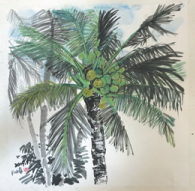
"China and the Philippines are good neighbors. I hope we can strengthen people-to-people bonds through this event."
Cai Zhixin, painter
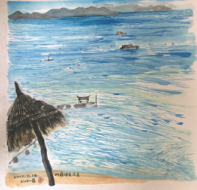
"The Philippines is beautiful. Art comes from life here. We absorb the energy and inspiration from nature to create our art. Through Chinese paintings, we create the beautiful scenery here."
Ding Jie, painter

"In the Philippines, we are learning to appreciate the beauty here with the Filipino artists. We experience nature and communicate together through art. I think it's wonderful."
Hao Ping, painter
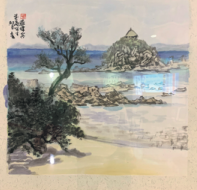
"It's significant to hold this event in the Philippines. It's a kind of integration in the language of art and cultural. I believe it's very meaningful."
Liu She, president of the School of Fine Arts of Nanjing Normal University
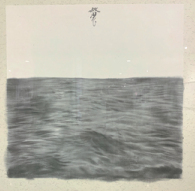
Filipino artists
"Art has no borders. Both Chinese and Filipino artists share the love of nature and the pursuit of aesthetics. What we drew during the trips are not only paintings, but also a bridge connecting the art and culture of the two countries."
Manuel Baldemor, painter, sculptor and illustrator
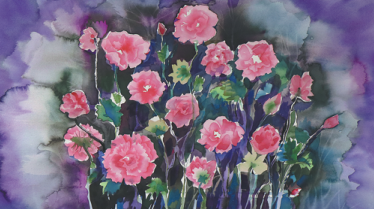
"Although it may not be spoken, in deed we share the same language through feelings, through music and through paintings."
Norberto Carating, painter
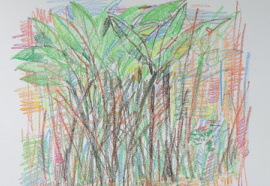
"This program is very important in building cultural ties between China and the Philippines. We can exchange ideas not only about art, but also about our experiences as artists."
Rico Lascano, abstract painter and sculptor
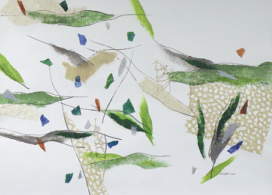
"This program offered me a chance to witness the development of China. I had been to China and I can see how things have improved so much here. Everything looks a lot better now than a few years ago."
Phyllis Zaballero, painter
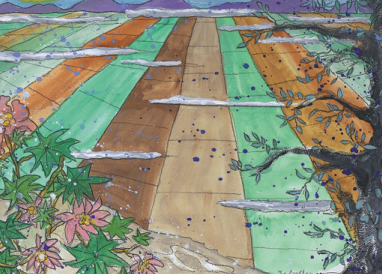
"There has been good interaction. Because we learned from them, they also learned from us. We all are beneficiaries of this project."
Jonahmar Salvosa, painter
